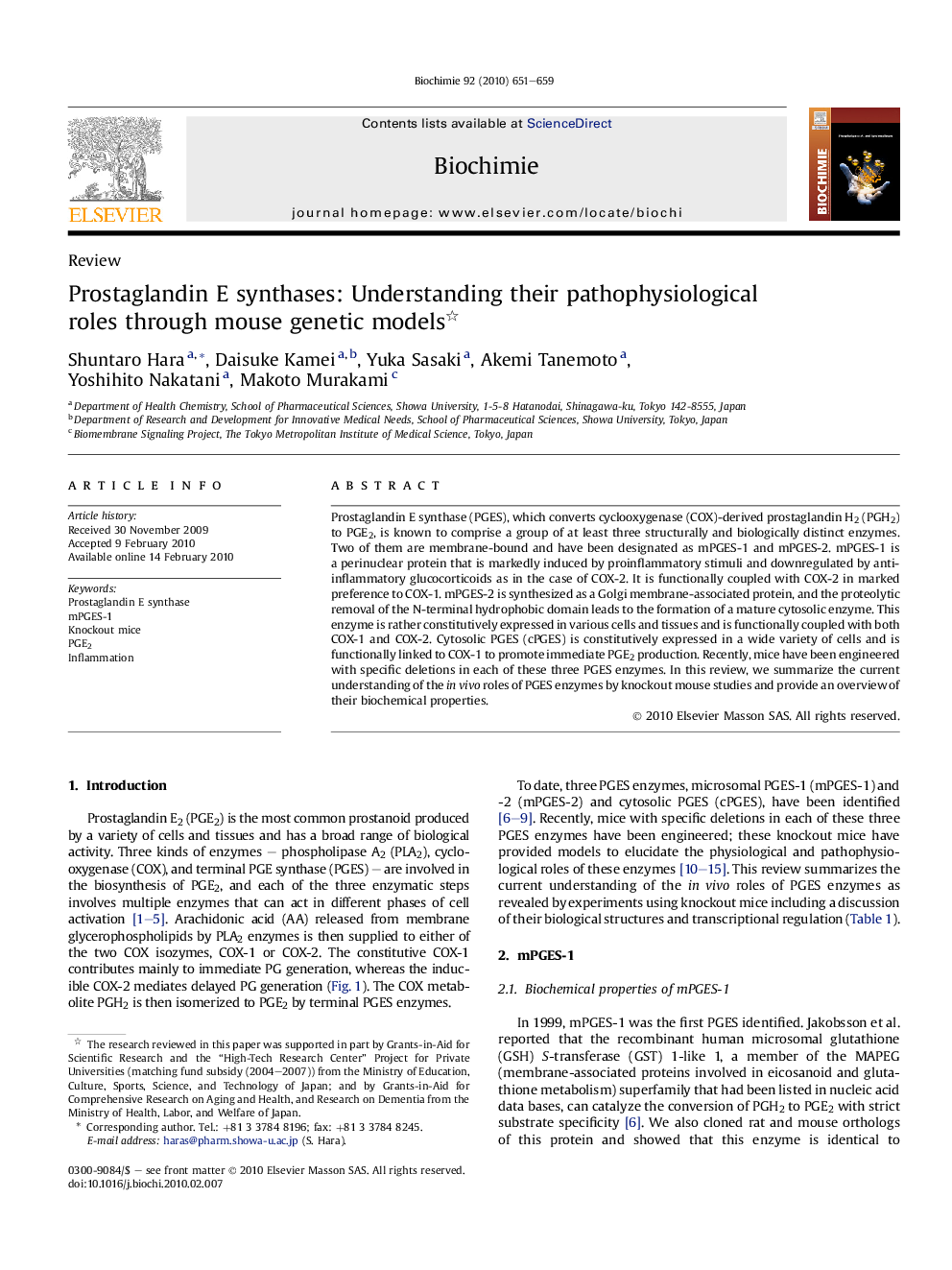| Article ID | Journal | Published Year | Pages | File Type |
|---|---|---|---|---|
| 1952226 | Biochimie | 2010 | 9 Pages |
Prostaglandin E synthase (PGES), which converts cyclooxygenase (COX)-derived prostaglandin H2 (PGH2) to PGE2, is known to comprise a group of at least three structurally and biologically distinct enzymes. Two of them are membrane-bound and have been designated as mPGES-1 and mPGES-2. mPGES-1 is a perinuclear protein that is markedly induced by proinflammatory stimuli and downregulated by anti-inflammatory glucocorticoids as in the case of COX-2. It is functionally coupled with COX-2 in marked preference to COX-1. mPGES-2 is synthesized as a Golgi membrane-associated protein, and the proteolytic removal of the N-terminal hydrophobic domain leads to the formation of a mature cytosolic enzyme. This enzyme is rather constitutively expressed in various cells and tissues and is functionally coupled with both COX-1 and COX-2. Cytosolic PGES (cPGES) is constitutively expressed in a wide variety of cells and is functionally linked to COX-1 to promote immediate PGE2 production. Recently, mice have been engineered with specific deletions in each of these three PGES enzymes. In this review, we summarize the current understanding of the in vivo roles of PGES enzymes by knockout mouse studies and provide an overview of their biochemical properties.
